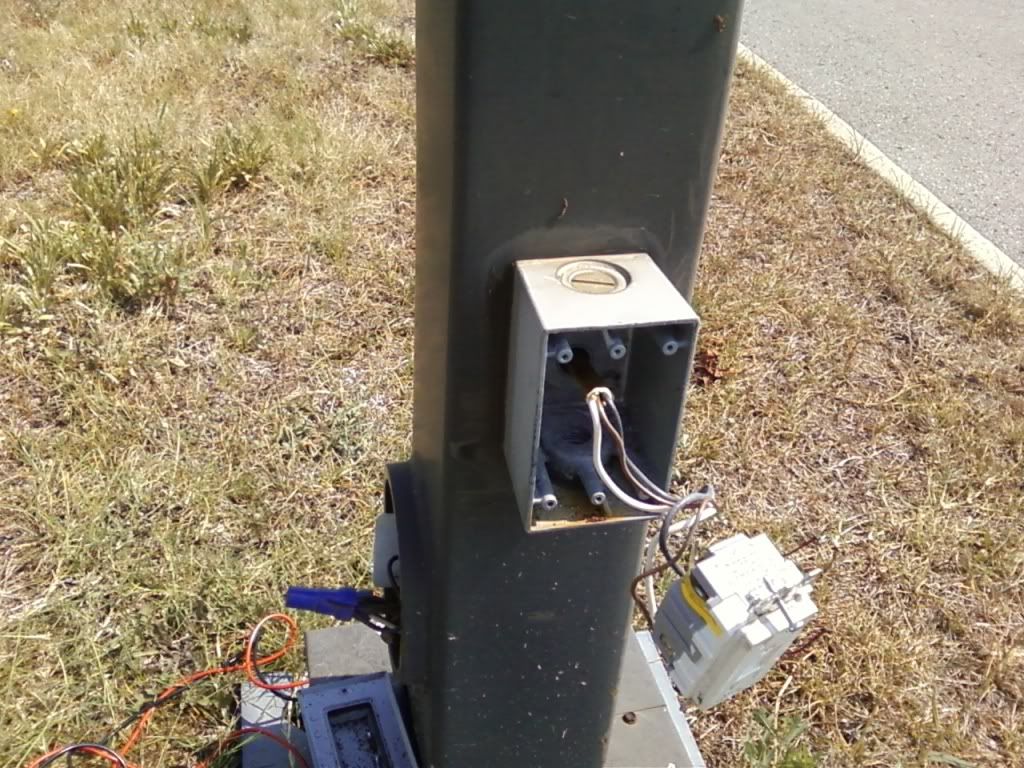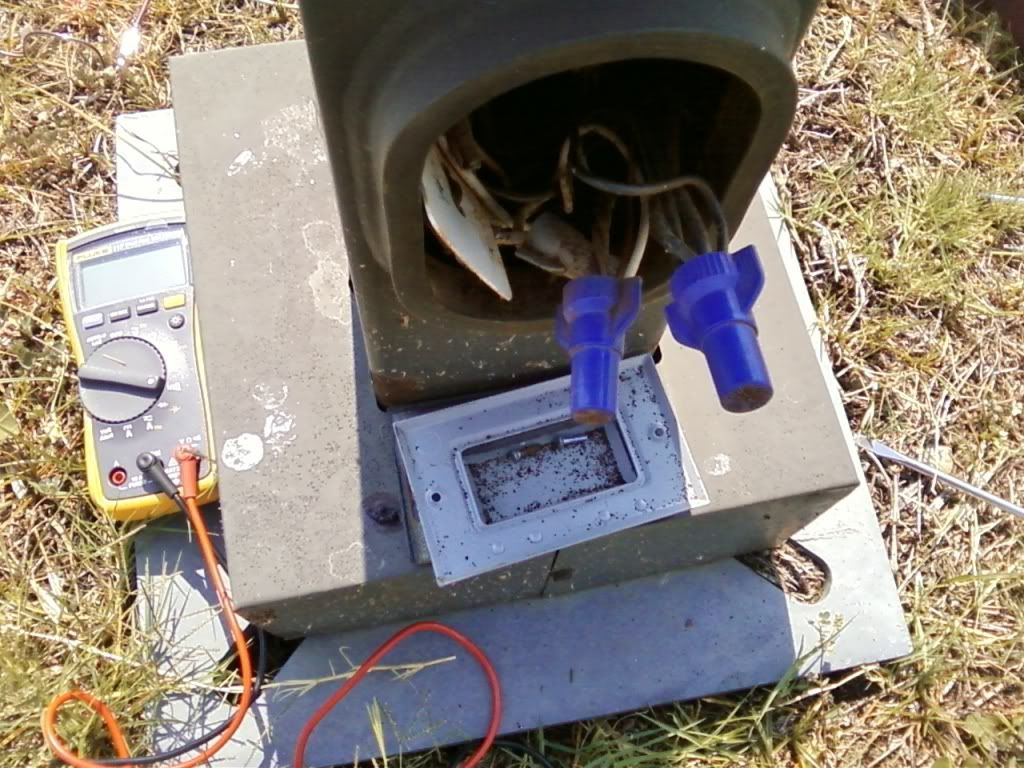- Location
- Tennessee NEC:2017
- Occupation
- Semi-Retired Electrician
I was asked to install a 120V receptacle on a parking lot light pole. I asked what the voltage was for the light but they didn't know. I took the handhole cover off and checked and it was 240V with no neutral. I told them there was no neutral and I couldn't legally/safely install the receptacle. They said there was already one installed on another pole, so I went to check it out. I found what I expected, EGC used as neutral. Apparently these lights either belong to the POCO or the POCO just maintains them. That was another giant reason to not install the recep, especially without their permission.
I think these are fed straight from the POCO's transformer. The feed is underground and I didn't see any disconnect anywhere. My question is if this is fed straight from POCO they probably just tied the EGC to the neutral/grounded conductor at the transformer. Is this really unsafe as far as using the EGC for the neutral? I know what happens in a branch circuit, but this is a straight feed. I checked continuity from the pole to the EGC and found none.
I also know it would be unsafe since it doesn't have OCP for 20A, but wonder about the EGC being the neutral in this case.


I think these are fed straight from the POCO's transformer. The feed is underground and I didn't see any disconnect anywhere. My question is if this is fed straight from POCO they probably just tied the EGC to the neutral/grounded conductor at the transformer. Is this really unsafe as far as using the EGC for the neutral? I know what happens in a branch circuit, but this is a straight feed. I checked continuity from the pole to the EGC and found none.
I also know it would be unsafe since it doesn't have OCP for 20A, but wonder about the EGC being the neutral in this case.


